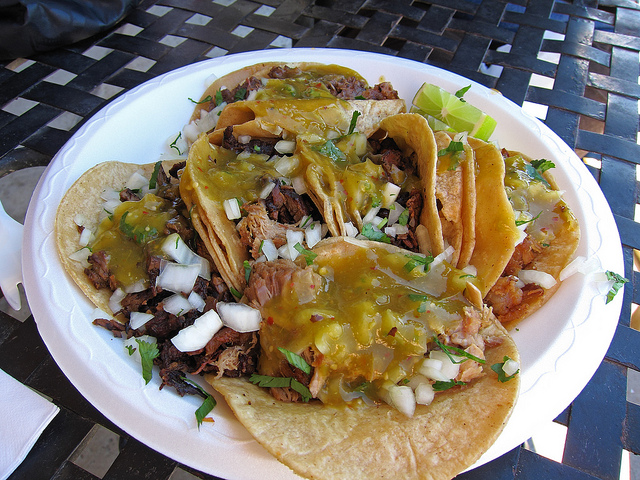The Messy History of Tacos
There’s so much more to the humble taco than meets the hungry North American consumer’s eye - or palate
Who doesn’t love to tuck into a gooey, drippy, savory taco? From soft to hard shell, Taco Bell to food trucks, there’s a variety to please every palate. But there’s so much more to the humble taco than meets the hungry North American consumer’s eye—or palate. Delving into the history of this delicious finger food reveals that the taco’s origins are just as eclectic (and sometimes questionable) as its delicious fillings.
Guernica bites into the messy taco tale:
The search for authentic Mexican food—or rather, the struggle to define what that meant—has been going on for two hundred years, and some of the most important battles have been fought outside of Mexico.
People have been eating basic tacos—corn tortillas with a bit of bean or meat rolled up inside—for more than a millennia. But though we know tacos have been around for donkey’s years, little information exists proclaiming their glory up until the late nineteenth century.
The now-ubiquitous label of “taco” is a modern usage, probably deriving from a Spanish root, in contrast to such dishes as tamales and pozole, which have a clear lineage to indigenous languages. Eighteenth-century Spanish dictionaries also defined “taco” as a ramrod, a billiard cue, a carpenter’s hammer, and a gulp of wine—a combination recalling the English colloquialism, a “shot” of liquor. Only in the mid-nineteenth century did the Spanish Royal Academy expand the meaning to encompass a snack of food.
But Mexico still hadn’t adopted the word. But in 1891, tacos had their moment. The Mexican book “The Bandits of Cold River” spilled the beans on formerly little-discussed tasty treats.
In an early scene in the novel, set during the festival of the Virgin of Guadalupe, a group of Indians danced in honor of the national saint, while feasting on “chito with tortillas, drunken salsa, and very good pulque . . . and the children skipping, with tacos of tortillas and avocado in their hand.”
This depiction stuck. Four years later, Mexican dictionaries listed tacos and credited Mexico City for their origins.
Today, the taco brings culinary joy to the residents not just of Mexico, but of the U.S. and beyond. And some argue that tacos have become more than just a food, embodying colonial stereotypes about Mexicans, as imposed by the southwestern United States.
People use food to think about others, and popular views of the taco as cheap, hot, and potentially dangerous have reinforced racist images of Mexico as a land of tequila, migrants, and tourist’s diarrhea.
But it also makes no sense to exchange the Anglo mythology of chili queens and the Taco Bell dog for a Manichean nationalist ideology prescribing romanticized peasant food as an antidote to McDonaldization.
Controversial, symbolic, historic and delicious. Take a moment to reflect on the the taco’s mysterious, complex origins next time you hit the late night taco sand for some crunchy, cheesy, saucy goodness.
More from Smithsonian.com:
/https://tf-cmsv2-smithsonianmag-media.s3.amazonaws.com/accounts/headshot/Rachel-Nuwer-240.jpg)

/https://tf-cmsv2-smithsonianmag-media.s3.amazonaws.com/accounts/headshot/Rachel-Nuwer-240.jpg)